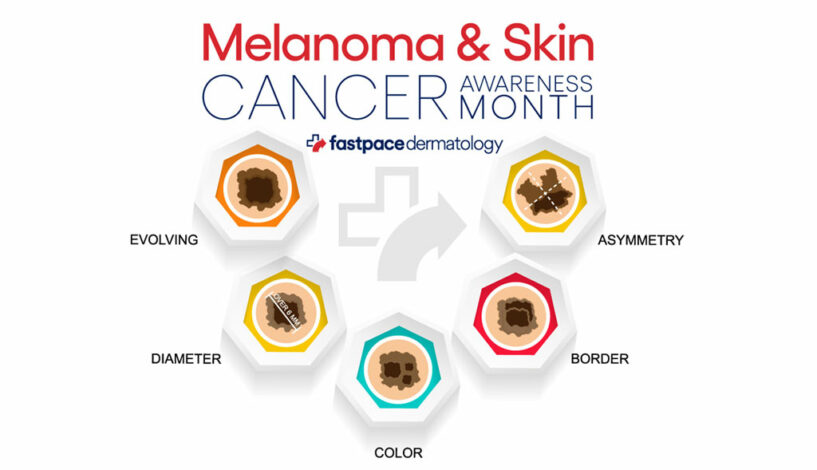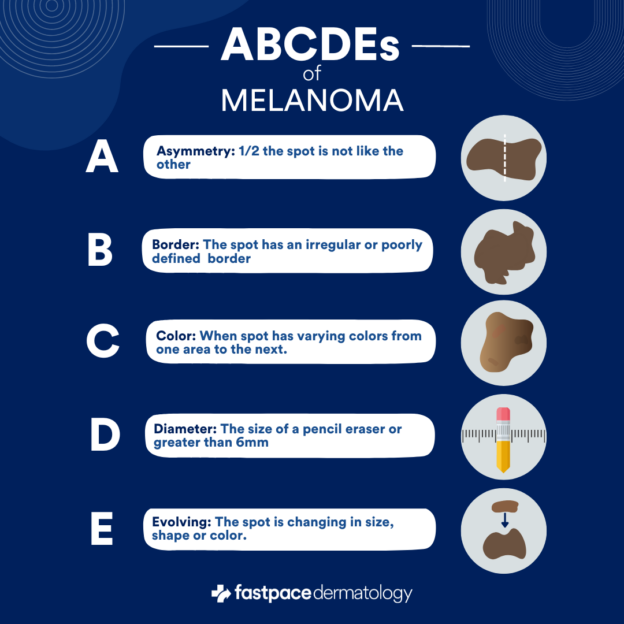
Be Sun Smart: Understanding and Preventing Melanoma
May is Melanoma and Skin Cancer Awareness Month, a time when we spotlight one of the most common and potentially deadly types of cancer. Fast Pace Health has dedicated this month to educating the public about the potential dangers of excessive sun exposure and the importance of preventative measures.
Be Sun Smart: Understanding and Preventing Melanoma
Summer is a favorite season for many of us. It’s a time to enjoy the sunshine, have fun at the beach, or simply bask in the great outdoors. However, it’s crucial to be aware of the potential dangers of too much sun exposure, particularly melanoma and skin cancer. By increasing our understanding, we can take steps to help protect ourselves and our loved ones from these potentially deadly diseases.
What is Melanoma?
Melanoma generally agreed to be the most dangerous type of skin cancer. It starts in skin cells called melanocytes, which are responsible for the color in your skin, hair, and eyes. When you get a tan, it’s these melanocytes that are working hard. But sometimes, they can start to grow out of control, forming a mass or a tumor. This is what we call melanoma.
Not all skin cancers are melanoma, but melanoma causes the most deaths. It can spread quickly to other parts of the body if not caught early. That’s why it’s so important to be aware of it and check our skin regularly.
There are three major types of skin cancer:
Basal cell carcinoma (BCC): The most common type, BCC typically appears as a bump or patch on the skin and rarely spreads to other parts of the body.
Squamous cell carcinoma (SCC): This type is more likely to spread than BCC and usually looks like a red, scaly patch or a wart-like growth.
Melanoma: As mentioned earlier, melanoma is generally agreed to be the most dangerous type of skin cancer, and it can appear as an irregularly shaped mole or an existing mole that has changed in appearance.
Why is Melanoma Awareness Important?
Raising awareness about melanoma and skin cancer is essential because early detection and treatment can help significantly improve the chances of survival. According to the American Cancer Society, the five-year survival rate for melanoma, when detected early, is about 99%. However, if melanoma has spread to distant parts of the body, the survival rate drops to around 32%.
In addition to saving lives, increased awareness can help people make better decisions about sun protection and avoid unnecessary risks that could lead to skin cancer.
How to Spot the Signs of Melanoma and Skin Cancer
- The Centers for Disease Control and Prevention (CDC) recommends using the “ABCDE” method to check for suspicious moles or skin growths:
- Asymmetry: If you draw a line through the middle of a mole, both halves should be roughly the same shape. If not, it could be a sign of melanoma.

It’s essential to perform self-examinations regularly and consult with a dermatologist if you notice any changes or suspicious growths.
How to Help Protect Yourself from Melanoma and Skin Cancer
Here are some steps you can take to help protect yourself from melanoma and other types of skin cancer:
- Avoid Sun During Peak Hours: Try to avoid the sun during peak hours (usually from 10 a.m. to 4 p.m.) when the sun’s rays are the strongest.
- Wear Sunscreen: Apply a broad-spectrum sunscreen with an SPF of at least 30 to all exposed skin, even on cloudy days. Reapply every two hours — or more often if you’re swimming or perspiring.
- Wear Protective Clothing: Cover your skin with dark, tightly woven clothing that covers your arms and legs, and a broad-brimmed hat, which can provide more protection than does a baseball cap or visor.
- Avoid Tanning Beds and Sunlamps: These sources of artificial UV radiation can cause skin damage and increase the risk of skin cancer.
- Perform Regular Skin Self-Exams: Check your skin once a month for new skin growths or changes in existing moles, freckles, bumps, and birthmarks. These changes can be signs of skin cancer.
- Eye Protection: Wear sunglasses with UV protection to help shield your eyes from harmful rays.
- Healthy Lifestyle: A balanced diet, regular exercise, and not smoking can help maintain your overall health and may contribute to skin health.
- See a Dermatologist Annually: Regular check-ups can help catch any potential issues early when they are most treatable.
Dr. Steil, Dermatology Medical Director at Fast Pace Health, says, “Prevention and early detection are two of the most effective weapons we have against skin cancer and melanoma. During May, and indeed throughout the year, we want to remind everyone that skin cancer is not only common, but it’s also one of the most preventable forms of cancer. Regular self-examinations, along with professional dermatology check-ups, can go a long way in catching any potential issues early. We encourage everyone to be sun smart – use sunscreen, wear protective clothing, and seek shade during peak sunlight hours. Our Fast Pace Health dermatology providers are ready to work together with you to help minimize the risk and maximize health and longevity.”
Fast Pace Dermatology and its affiliates offer services in both Louisiana and Tennessee. With 9 dermatology providers working across 19 clinics, we treat everyday skin conditions including acne, eczema, skin allergies, and the most difficult skin diseases. Our team members can also help address a variety of skin, hair, and nail issues.
To learn more about dermatology services in your area, visit our website: https://fastpacehealth.com/service/dermatology-care/
Related Resources


